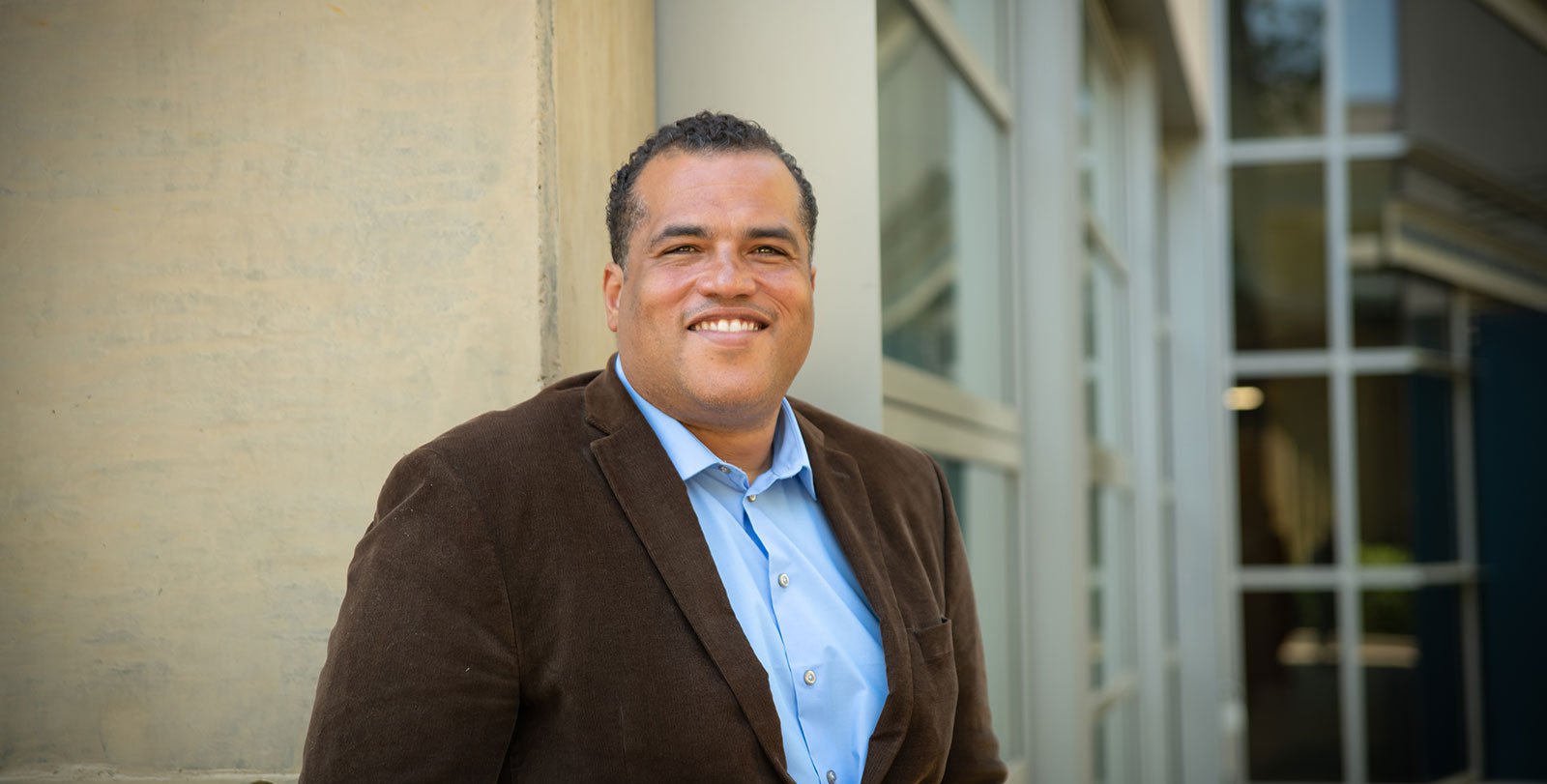
A Conversation with Hosea Nelson
Take a look around yourself right now and you will probably realize that you are surrounded by things that could not be made without synthetic chemistry. From the electronic screen you are reading this on, to the paint on the walls around you, to the polyester-blend shirt you might be wearing, none of it would exist without chemistry.
Chemistry has provided innumerable benefits to modern life, but it has also come with costs. Electronics manufacturing can leave toxic waste behind. Political conflicts can emerge over rare resources. Plastics can linger in the environment.
Hosea Nelson (PhD '13), Caltech's newest professor of chemistry, is looking for easier, safer, and more sustainable ways to create the many man-made things we live with.
After graduating from Caltech, Nelson joined the faculty of UCLA in 2015. Now, as he prepares to return to his alma mater, we sat down with him to talk about his research, his big-picture goals for chemistry, how to take risks in science, and where the best place for fly-fishing is.
Describe your research for us.
We work in a lot of different areas, but they all converge on this idea of trying to make chemical synthesis better. Our work will hopefully make drugs that are more therapeutic, fuels that are more efficient, and in a lot of other ways improve the chemistry for creating the molecules that affect your life.
What are the big-picture questions you are hoping to answer?
There are a few things. Chemical reactions are the tool we use to make molecules, but a lot of these reactions use materials that are toxic or rare. We want to develop reactions that use elements that are more common and safer, like silicon, lithium, and boron. We also want these reactions to be sustainable. Besides sustainability, we are driven by chemical complexity. While nature has enzymes, which are little molecular machines that catalyze the formation of complex biomolecules, synthetic chemistry often falls short in the laboratory synthesis of complex molecules. Many of the chemical reactions that we seek to develop in our lab will hopefully rival those found in nature.
Molecules are incredibly small, often 1 billionth of a meter or smaller, and are therefore invisible to the naked eye. Understanding the structures of molecules is a critical component of chemical synthesis. … You have to know what you are making to make it right! This process, the process of identifying molecules, is called characterization, and it can take anywhere from hours to years per molecule. A major part of our program is developing new characterization methods that will allow us to "see" molecules as if we are just looking at them with our own eyes. We use electron microscopy to do this. "Seeing" molecules will provide information for chemical synthesis and drug discovery efforts in minutes instead of days or years.
How do you learn to take risks in your research?
I think a lot of time, at least personally, I can trace back all my fears and risk-averse behavior to needing external validation … worrying about how others will perceive my scientific ideas. A good strategy to overcome this is to look toward yourself instead of toward others. Instead of seeking validation, you should be motivated by personal gratification, curiosity, and a desire to impact humanity. This gives you clearance to pursue novel and often unpopular approaches to problems. It is really the root of creativity.
If you just seek validation and approval in your academic pursuits, you might do well, but you'll never break the mold and go beyond what the rest of the field is doing. You will be a cog in the machine instead of the spark for innovation.
You are a Caltech alum. Did you ever think you would be coming back? What is it like returning after 10 years?
A thing that's often said about Caltech is that Caltech looks fantastic in the rearview. After I left, I realized Caltech is the best place to be and that I wanted to be back. I think Caltech is special in that it doesn't have a huge faculty or a huge student body, but it has the best faculty and the best student body. It's a density of achievement that's unmatched anywhere in the world.
One special thing I noticed at Caltech when I was a grad student is the collegiality of students and faculty. I met so many mentors who positively influenced my career and friends who inspired me to be a better person. And now it feels like I'm coming home to hang out with friends.
It's this wonderful environment that's so driven by science. It's the best place in the world.
One thing that I am excited about is that that the university has improved gender balance on the student side and faculty side since I graduated. There is also a palpable effort to improve equity and diversity, which I think will make the Caltech culture even more magical. It will make the best place to do research even better.
What do you do when you have free time?
I'm super big on the outdoors. I like to go on road trips to random destinations to go fishing, and this ranges from Baja to Montana to Montauk, the tip of Long Island.
The last road trip I took was to Idaho to go fly-fishing in this river called Silver Creek that's legendary. Ernest Hemingway wrote this little piece about wanting to take his son to the best fly-fishing place in the world, and it was Silver Creek.
If you had to give a tip for road-tripping, what would it be?
Two tips: 1) download maps, music and movies to your iPad or phone before you leave, and 2) you are allowed to car camp in Walmart parking lots overnight.
